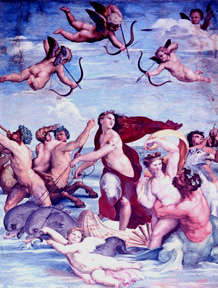Renaissance painting (16th century) depicting Galatea. Villa Farnesina, Rome, Italy.
Click on image for full size
Image courtesy of Photodisc, Inc. All rights reserved. Images provided by (c) 1995 Fototeca Storica Nazionale.
Galatea
Galatea, whose name means "milk-white," was a sea nymph, one of the Nereids, who lived in the sea surrounding the island of Sicily. The one-eyed Cyclops Polyphemus, who lived in Sicily with his flocks of sheep and goats, was desperately enamored of Galatea who instead preferred the young shepherd Acis, son of
Pan.
Galatea and Acis used to mock the serenades that Polyphemus sang for Galatea. Once Polyphemus caught the pair sleeping on a grassy mound; he violently killed Acis by crushing him under a huge rock. Acis blood formed a small stream beneath the rock that Galatea turned into a stream of water that was named after him.
Another version of the legend suggests the existence of a mutual love
between Galatea and Polyphemus. They were the parents of three mythical
heroes: Galas, Celtus, and Illyrius from whose names derive those of the Galatians, the Celts, and the Illyrians.
Galatea is involved in yet another story. Pygmalion, unhappy with the women in his city, decided to carve a statue to be his wife. Aphrodite granted his wish that the statue come to life. It is said that Pygmalion named his new partner Galatea.
Because Galatea was a sea-nymph and attendant of the sea-god Poseidon,
her name had been given to one of the moons of the planet Neptune.
You might also be interested in:
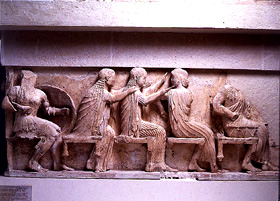
Aphrodite was the Greek goddess of love and beauty. She was known to the Romans as Venus. There were actually two different Aphrodites, one was the daughter of Uranus, the other the daughter of Zeus and
...more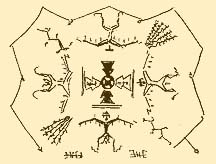
Ahsonnutli was the sky father and chief deity of the Navajo Indians. He created heaven, Earth, and the sky. Each of the four cardinal directions was supported by a giant. Each direction was also associated
...more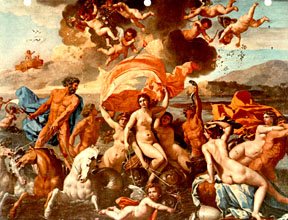
Amphitrite was one of the fifty Nereids, the attendants of the sea-god Poseidon. Poseidon (Neptune) had fallen in love with Amphitrite after seeing her dancing on the island of Naxos. Amphitrite rejected
...more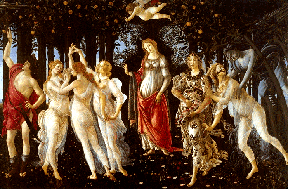
In Greek mythology, Apollo was the son of Jupiter(in Greek Zeus) and Leto (Letona). He was the god of the Sun, logic, and reason, and was also a fine musician and healer. Leto travelled all over Greece
...more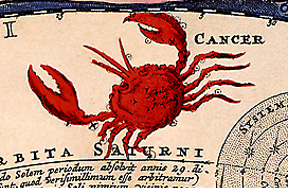
According to an ancient Greek legend, the figure of a gigantic crab was placed in the nighttime sky by the goddess Hera to form the constellation Cancer. Hera was the jealous wife of the sky god, Zeus.
...more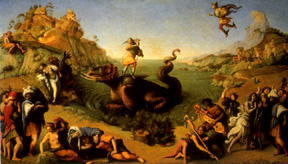
In the Northern Hemisphere sky is the constellation Cepheus, king of Ethiopia, and that of his wife Cassiopeia. Cassiopeia claimed that she and her daughter Andromeda were more beautiful than the sea nymphs,
...more
According tho the Navajo mythology, the Milky Way was created by the misbehavior of the mischievous deity, Coyote. When the world was created, the Holy People gathered around Black God to place the stars
...more


